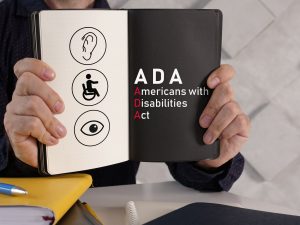For those who are disabled and unable to work, Social Security Disability (SSD) benefits might be a lifesaver. Moreover, SSDs are frequently the only form of assistance accessible to those who are unable to work, making them more than just a convenience; they are a lifesaver. But as with every government program, the Social Security Administration (SSA) has regulations and restrictions, and it’s vital to understand how the program operates and what won’t be approved before applying.
The first thing to understand is that receiving benefits does not require your condition to be permanent. The SSA will offer benefits to applicants who satisfy the criteria, and those benefits normally continue until the person can routinely work again. Work incentives, a set of government regulations, assist people in getting well and returning to work. Yet, this does not mean that a temporary handicap will be accepted. Continue reading to learn more about the qualifications and then contact PLBH at (800) 435-7542 for a free legal consultation.
What Kind of Disability Are Eligible for SSD Benefits?
According to the SSA, there are numerous factors that may make someone eligible for SSD benefits. Keep in mind that the samples only cover a few different kinds of disability within each category:
- Musculoskeletal disorders. These can include conditions including paralysis, spinal deformity, and arthritis.
- Speech and sense disorders. Blindness or other visual impairments, hearing loss, and speech problems are examples of this.
- Respiratory conditions. Emphysema, asthma, chronic obstructive lung illness, and cystic fibrosis are a few examples of what falls under this category.
- Cardiovascular issues. This can widely refer to a number of ailments that impair the heart’s and/or circulatory system’s proper operation.
- Digestive system issues. Inflammatory bowel disease, malnutrition, and gastrointestinal hemorrhage are examples of digestive problems.
- Genitourinary conditions. Conditions that can lead to chronic renal disease fall under this category.
- Hematological conditions. Anemias, thrombosis, lymphoma, and myeloma are examples of hematological conditions.
- Skin disorders. This includes diseases including ichthyosis, persistent skin infections, and inherited photosensitivity disorders.
- Endocrine problems. Hormonal imbalances are a symptom of endocrine disorders.
- Congenital diseases involving several body systems. Several forms of Down syndrome and other congenital diseases fall within this category.
- Neurological diseases. Neurological conditions include comas, amyotrophic lateral sclerosis, and epilepsy.
- Mental disorders. These can include schizophrenia, anxiety and obsessive-compulsive behaviors, autism, eating disorders, and trauma-related diseases.
- Cancer. Except for some cancers linked to HIV, many different forms of cancer are listed.
- Diseases of the immune system. Several immune system conditions that lead to immune system dysfunction fall under this group.
If someone’s medical condition isn’t on the SSA’s requirements, that doesn’t mean it doesn’t qualify for SSD benefits. To persuade the SSA that the person deserves the benefits, though, may require more work and justification.
What Are Some of the SSA’s Requirements for Disability Benefits?
Secondly, SSDs are only accessible to those who have worked in occupations covered by Social Security and have disabilities in the categories outlined above. In order to qualify for benefits, they must have worked recently and for a sufficient length of time.
For up to four credits each year, the SSA bases work credits on the sum of each person’s annual wages or income. The amount required to obtain a work credit varies every year. To qualify for benefits, a person typically needs to earn 40 credits, half of which must be earned during the ten years preceding the disability.
The SSA can work with those who are not permanently disabled. That said, that doesn’t guarantee they’ll cover partial disability or short-term disability. This portion of eligibility is determined by the following three factors:
- Because of the medical condition, the applicant is unable to work and generate revenue or wages.
- They can’t do work they previously did, nor can they transition to other work because of the medical condition. Remember that if a person is able to find other employment despite a medical condition that prevents them from performing construction work, they may not be eligible for benefits (for example, a desk job).
- The ailment has lasted or is projected to last at least one year or result in death.
You can contact PLBH at (800) 435-7542 for help today.

